What Does a Baby Woodpecker Look Like?
Updated: Sep. 11, 2023
That unusual bird might be a juvenile or baby woodpecker! Learn what baby woodpeckers eat, how long they stay in the nest, and more.
Identifying a Baby Woodpecker
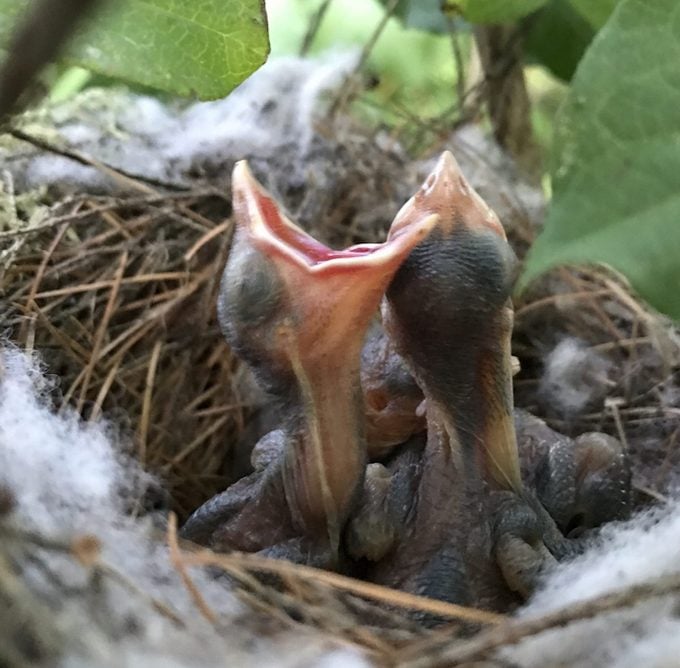
The appearance of baby woodpeckers varies depending on the species. Upon hatching, the babies are pink and bald; as they grow, they sport feathers resembling those of their parents. Often, these juvenile birds lack a key characteristic of adults or look slightly different.
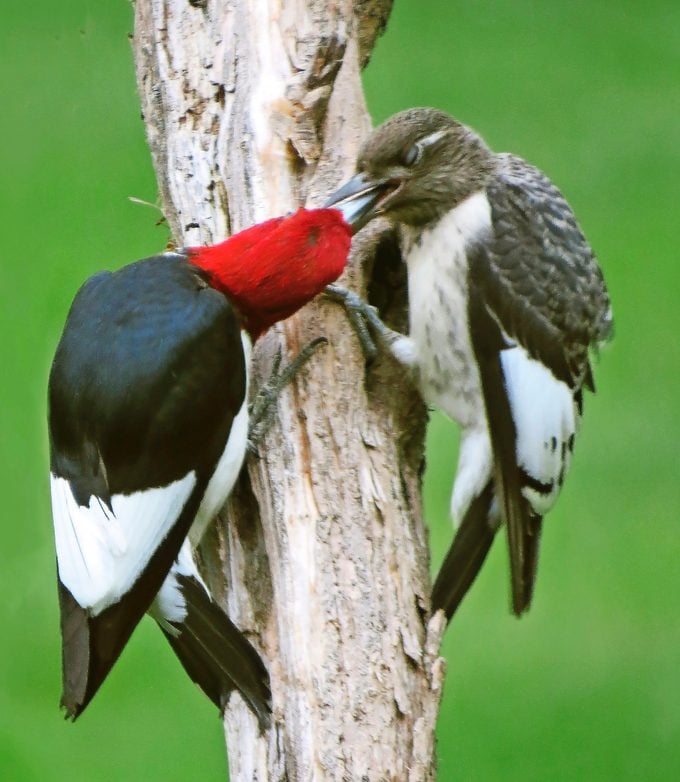
Juvenile red-bellied woodpeckers, for example, lack the red markings on the head. Juvenile downy woodpeckers feature red feathers at the tops of their heads.
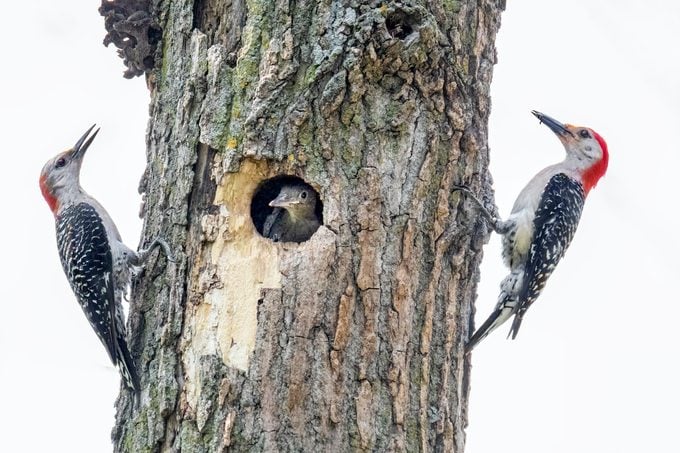
It can be tricky to determine the differences between juvenile and adult birds, but typically, if a bird looks unfamiliar for its species, it might be a juvenile. In some cases, juvenile plumage can resemble female plumage.
Discover mind-blowing facts about woodpeckers.
How Long Do Baby Woodpeckers Stay in the Nest?
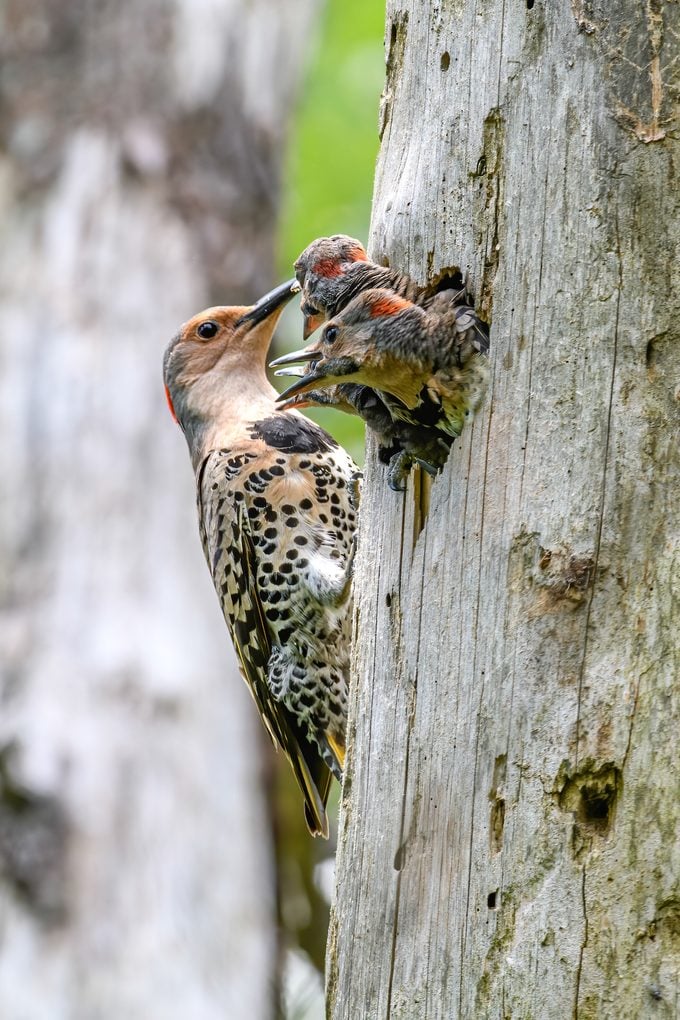
Similar to the differences in appearance, the length of time baby woodpeckers spend in the nest varies. A general estimate puts the incubation of eggs at around 2 to 2 1/2 weeks, and the time spent in the nest at about 3 to 4 weeks.
Typical clutch sizes vary. For example, a red-headed woodpecker might lay anywhere from three to 10 eggs, while a pileated woodpecker might lay three to five.
Here’s why woodpeckers peck—and how to stop it.
What Do Baby Woodpeckers Eat?
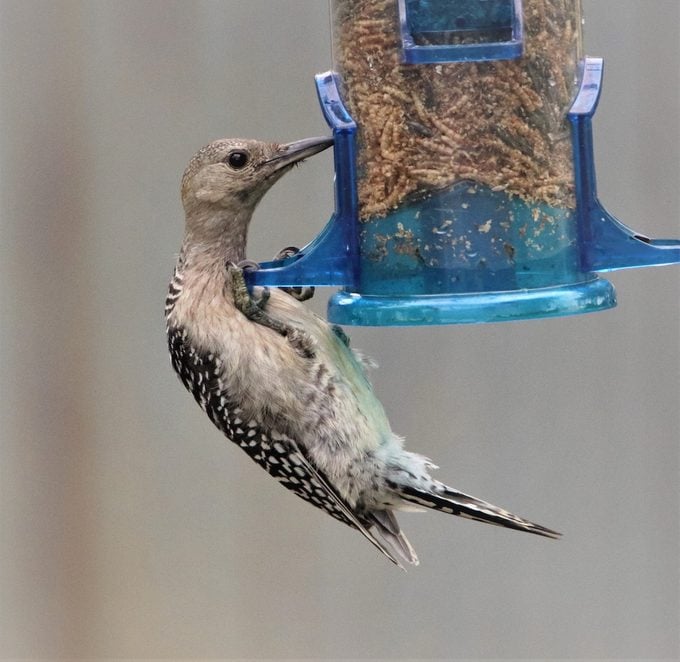
Baby woodpeckers’ diets mostly consist of the same or similar foods that their parents consume. Adult woodpeckers will bring the nestlings insects, such as larvae and grubs; seeds, such as black oil sunflower; fruit, such as berries; and other staples typical of a woodpecker.
Meet the sapsucker birds: woodpeckers with a sweet tooth.
What Should I Do If I Find a Baby Woodpecker?
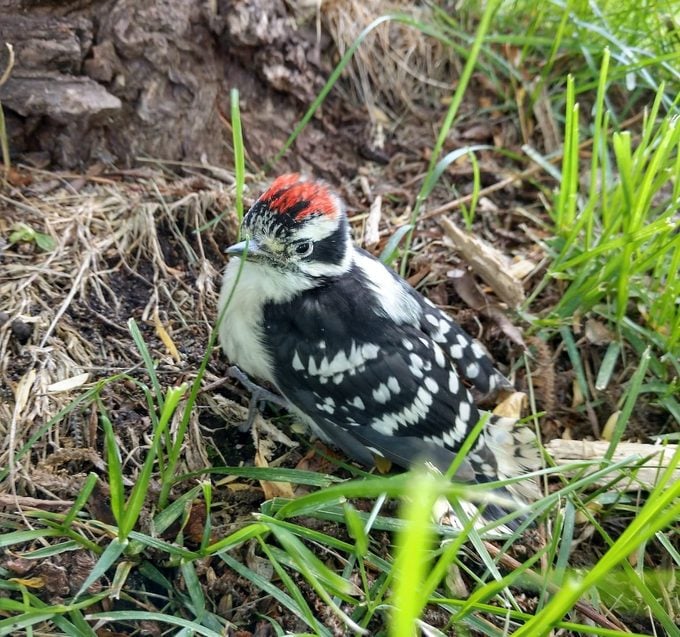
Many myths exist about what to do if you find a baby bird. Contrary to popular belief, bird parents won’t abandon their young if they “have a human’s scent.” If you find a baby bird that is obviously unable to fly, you can help it by placing it back in its nest.
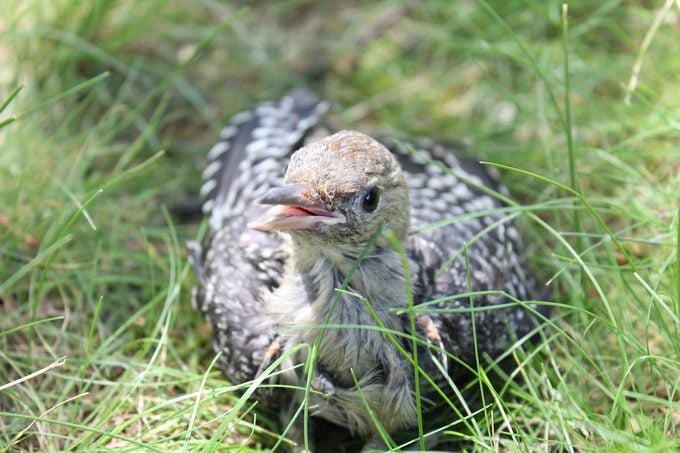
However, if the baby woodpecker has obvious plumage and is able to hop, flit, or fly on its own, it’s not a good idea to return it to its nest. This is a juvenile bird, and it’s simply acclimating to the world. There’s a good chance one of its parents is nearby and watching, so there’s no cause for concern.
Next, learn how to identify a hairy woodpecker.
